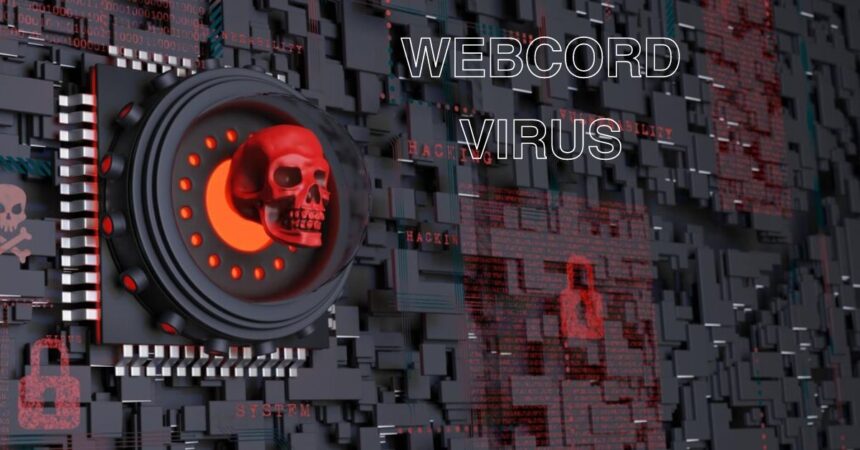Introduction
In the ever-evolving landscape of cybersecurity threats, new malware and viruses continue to emerge, targeting unsuspecting users. One such emerging concern is the WebCord Virus. This malware has been causing concerns among security experts due to its potential to compromise user data and disrupt system functionality. Understanding what the WebCord Virus is, how it operates, and how to defend against it is crucial for anyone looking to protect their digital security.
What is WebCord Virus?
The WebCord Virus is a type of malware that infiltrates systems through deceptive tactics often disguised as a legitimate application. It primarily affects Windows macOS and Linux users particularly those who download applications from untrusted sources.
Origins and Behavior
The WebCord Virus is believed to have originated from cybercriminal networks that distribute Trojan horses and spyware under the guise of useful software. It is often associated with modified or cracked versions of applications and software that claim to enhance user experience. Once installed the virus can:
- Steal personal data such as passwords, financial information, and browsing history.
- Monitor user activity by recording keystrokes and taking screenshots.
- Inject ads and pop-ups that lead to malicious websites.
- Allow remote access for cybercriminals to control the infected system.
- Disrupt system performance, causing slowdowns and frequent crashes.
How It Spreads
The WebCord Virus typically spreads through the following means:
- Malicious Downloads – It is often bundled with pirated software or fake updates.
- Phishing Emails – Users receive emails containing infected attachments or links.
- Compromised Websites – Malicious websites trigger automatic downloads of the virus.
- USB Drives and External Storage – If an infected device is connected, it can transfer the virus.
Defending Against WebCord Virus
Protecting yourself from the WebCord Virus requires vigilance and strong cybersecurity measures. Here are some effective steps to prevent infection and mitigate damage if already affected.
1. Avoid Downloading Suspicious Software
- Only download applications from official websites and trusted sources.
- Avoid pirated software, as it often contains hidden malware.
- Verify software authenticity by checking user reviews and official digital signatures.
2. Strengthen Email Security
- Do not open attachments or click on links from unknown senders.
- Use an email filter to detect phishing attempts.
- Verify sender details before downloading any files.
3. Install and Update Antivirus Software
- Use trusted antivirus software such as Norton, McAfee, or Bitdefender.
- Enable real-time protection to detect malware instantly.
- Regularly update your antivirus to recognize new threats.
4. Enable Firewall Protection
- Ensure that your system’s firewall is enabled to block unauthorized access.
- Configure firewall rules to restrict suspicious network activities.
5. Perform Regular System Scans
- Run full system scans at least once a week.
- Use anti-malware tools like Malwarebytes to remove hidden threats.
- Monitor system performance for unusual behavior.
6. Keep Your System and Software Updated
- Regularly update your operating system browsers and applications.
- Enable automatic updates to patch security vulnerabilities.
7. Remove the WebCord Virus (If Infected)
Step 1: Boot into Safe Mode
- For Windows:
- Restart your computer and press F8 or Shift + Restart.
- Select Safe Mode with Networking.
- For Mac:
- Restart and hold Shift until the Apple logo appears.
Step 2: End Malicious Processes
- Open Task Manager (Ctrl + Shift + Esc) on Windows.
- Look for suspicious processes related to WebCord.
- Right-click and select End Task.
Step 3: Uninstall Suspicious Programs
- Go to Control Panel > Programs & Features.
- Uninstall any unfamiliar or suspicious applications.
Step 4: Clear Temporary Files
- Open Run (Win + R), type %temp%, and delete all files.
Step 5: Reset Browsers
- Remove unwanted extensions and reset browser settings.
Step 6: Perform a Full System Scan
- Use an antivirus scanner to remove remaining threats.
Conclusion
The WebCord Virus is a serious cybersecurity threat that can lead to personal data theft system slowdowns and potential remote access by cybercriminals. By practicing safe browsing habits installing reliable security software and staying informed about emerging threats users can significantly reduce their risk of infection. If already infected following a structured removal process can help restore system security. In today’s digital age, cybersecurity awareness is essential to keep malicious entities at bay.
FAQs
1. How do I know if my system is infected with the WebCord Virus?
Signs of infection include unexpected pop-ups, slow system performance unrecognized programs running, and unusual network activity. Antivirus scans can confirm the presence of malware.
2. Can the WebCord Virus steal my passwords?
Yes, the WebCord Virus can include keyloggers that capture passwords banking details and other sensitive information.
3. Is WebCord Virus dangerous for Mac users?
While macOS is generally more secure than Windows, macOS users are not immune to malware. The WebCord Virus can still compromise Mac systems if downloaded from untrusted sources.
4. Can I remove WebCord Virus manually?
Yes, but manual removal requires technical knowledge. Using safe mode uninstalling suspicious software deleting temporary files, and running antivirus scans are effective methods.
5. How can I prevent future infections?
To prevent future infections:
- Avoid downloading files from untrusted sources.
- Keep your system updated.
- Use a reputable antivirus program.
- Be cautious of phishing emails and suspicious links.
6. Can antivirus software detect and remove WebCord Virus?
Yes, most updated antivirus programs can detect and remove the WebCord Virus. Regular scans and real-time protection help prevent infections.
7. Is the WebCord Virus a new threat?
The WebCord Virus is relatively new but follows similar attack patterns as older malware. Staying updated on cybersecurity news can help identify emerging threats.





